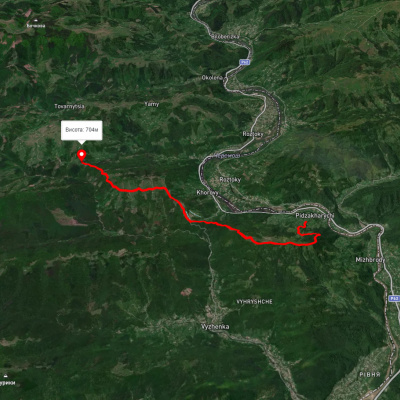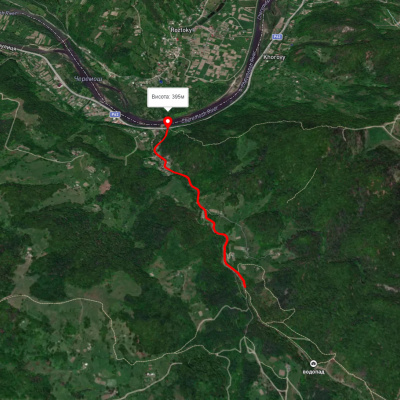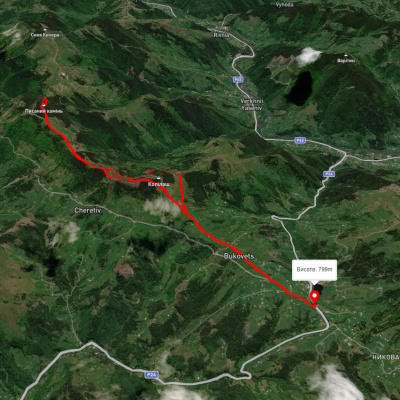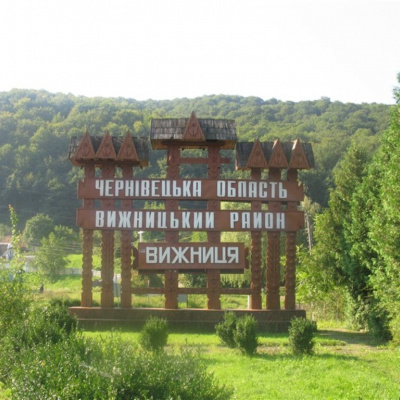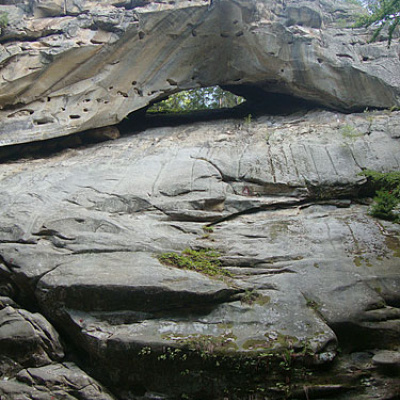Vyzhnytsia district
The main tourist settlements of the Vyzhnytsia district: Bagna, Berehomet, Vakhnivtsi, Vyzhenka, Vovchynets, Dolishniy Shepit, Ispas, Lukavtsi, Myhove, Chornohuzy. The district center is the village of Vyzhnytsia. It is located in the west of Chernivtsi region, in the foothills of the Carpathians, on the banks of the Cheremosh and Siret rivers. The Vyzhnytsia region is known for its artistic folk crafts: embroidery, Easter egg making, carpet making, and woodworking. And to plan a real vacation, there is an opportunity to rent housing in the private and hotel sectors of the district for every taste and budget.
The largest local center of concentration of historical and cultural monuments is the town of Vyzhnytsia, which is, in fact, the gateway to the Vyzhnytskyi National Park. The settlement was first mentioned in a Moldovan chronicle in 1501. Located at the foot of the Carpathians, Vyzhnytsia has long been developing as a trading post, closely connected with the mountainous and lowland regions of Bukovyna, and was famous for its good fair traditions. At the end of the eighteenth century, with the beginning of the development of the timber industry, Vyzhnytsia became an important center of timber trade. Construction timber and firewood were floated down the Cheremosh and Prut rivers to Chernivtsi, and from there through the Boyany to Bessarabia and Podillia.
The oldest settlements on the territory of the present-day Vyzhnytsia district are the villages of Zamostia (Paleolithic site 40-12 thousand years ago), Banyliv (Trypillian site, 3 thousand BC), Vashkivtsi, Ispas, Karapchiv, Milievo (Chernokhivska culture, II-VI centuries).
The earliest chronicle mention of Vyzhnytsia suggests that the town was founded in the late fifteenth century. From 1514 to 1574, the lands of Vyzhnytsia were conquered by Sultanist Turkey. Until 1774, Vyzhnytsia belonged to the Moldavian principality. Later, like the whole of Northern Bukovyna, it came under the rule of Austria-Hungary.
Crafts and trade have long been developed in Vyzhnytsia and its surroundings. The status of a trading town was granted to Vyzhnytsia in 1767. The timber industry was born in the late eighteenth century. With the beginning of timber rafting on the Cheremosh River, the industry was further developed.
History reminds us that the proud freedom-loving spirit of the people of Vyzhnytsia resisted the arbitrariness of the local rich. Over time, these protests escalated into riots and uprisings. The anti-feudal struggle was especially active, led by the well-known leaders Oleksa Dovbush, Mykola Shtoliuk, and Lukian Kobyltsia.
In 1855 Vyzhnytsia became a county center. During the First World War, Vyzhnytsia and other settlements were reduced to ruins. The population was also decreasing. In November 1918, the territory of the present district was captured by the Royal Boyarist Romania. On June 28, 1940, the territory of the Vyzhnytsia region as part of Northern Bukovyna was united with Ukraine. On November 11, 1941, the Vyzhnytsia district was formed.
The pride of the district is the Vyzhnytsia College of Applied Arts (opened in 1905).
Since 1994, the Vyzhnytsia Gymnasium, which was founded in 1908 as the first Ukrainian gymnasium in Bukovyna, has been restored. In 1995, the Vashkivtsi gymnasium resumed its work.
Vyzhnytsia hosts the Hutsul Festivals and the N. Yaremchuk Festival.
The cohort of prominent local residents includes Vasyl Mykhailiuk, a composer from Vashkivtsi, author of the famous "Cheremshyna", Nazariy Yaremchuk, writer Yosyp Burha, and artist Temistokl Virsta (Paris, born in the village of Ispas).
The names of prominent figures of Ukrainian culture are also associated with Vyzhnytsia: Yurii Fedkovych, Kornelii Ustynovych, Lesia Ukrainka, Ivan Franko, Marko Vovchok, Olha Kobylianska, Vasyl Stefanyk, and Hnat Khotkevych.
Architectural monuments
- House of Folk Art and Leisure, House of Children's Art, Vyzhnytsia;
- District hospital, butter factory, school named after Y. Fedkovych, Vyzhnytsia;
- Vyzhnytsia College of Applied Arts named after V. Shkriblyak
- St. Michael's Church, Roman Catholic Church, Vyzhnytsia;
- Monastery; m. Vashkivtsi, Anna's Hill.
Museums
- Museum-estate named after H. Garas, an ornamentalist artist, Vashkivtsi
- Museum-estate of the People's Artist of Ukraine N. Yaremchuk
- Museum of Honored Master of Folk Art of Ukraine 0. Hasiuk
- Center of history, culture and life of the district, Vyzhnytsia;
- Museum of the poet D. Zahul, Milievo village
Natural monuments
- Vyzhnytsia National Nature Park
- Dovbush's cave
- The rocks of the Extended Stone and the Falcon's Eye
- Waterfalls on the river Vyzhenka
- Sources of natural mineral waters
Які туристичні (пішохідні) маршрути проходять через/біля Vyzhnytsia district?
Пропонуємо пройти такі туристичні (пішохідні) маршрути через/біля Vyzhnytsia district: пер. Німчич - Протяте Каміння, Смугарські водоспади, с. Буковець – Писаний Камінь – с. Буковець, Писаний Камінь – с. Буковець, с. Шепіт, через г. Яровиця, г. Пнів'є, г. Масний Присліп до с. Шибене, с. Шепіт – г. Яровиця
